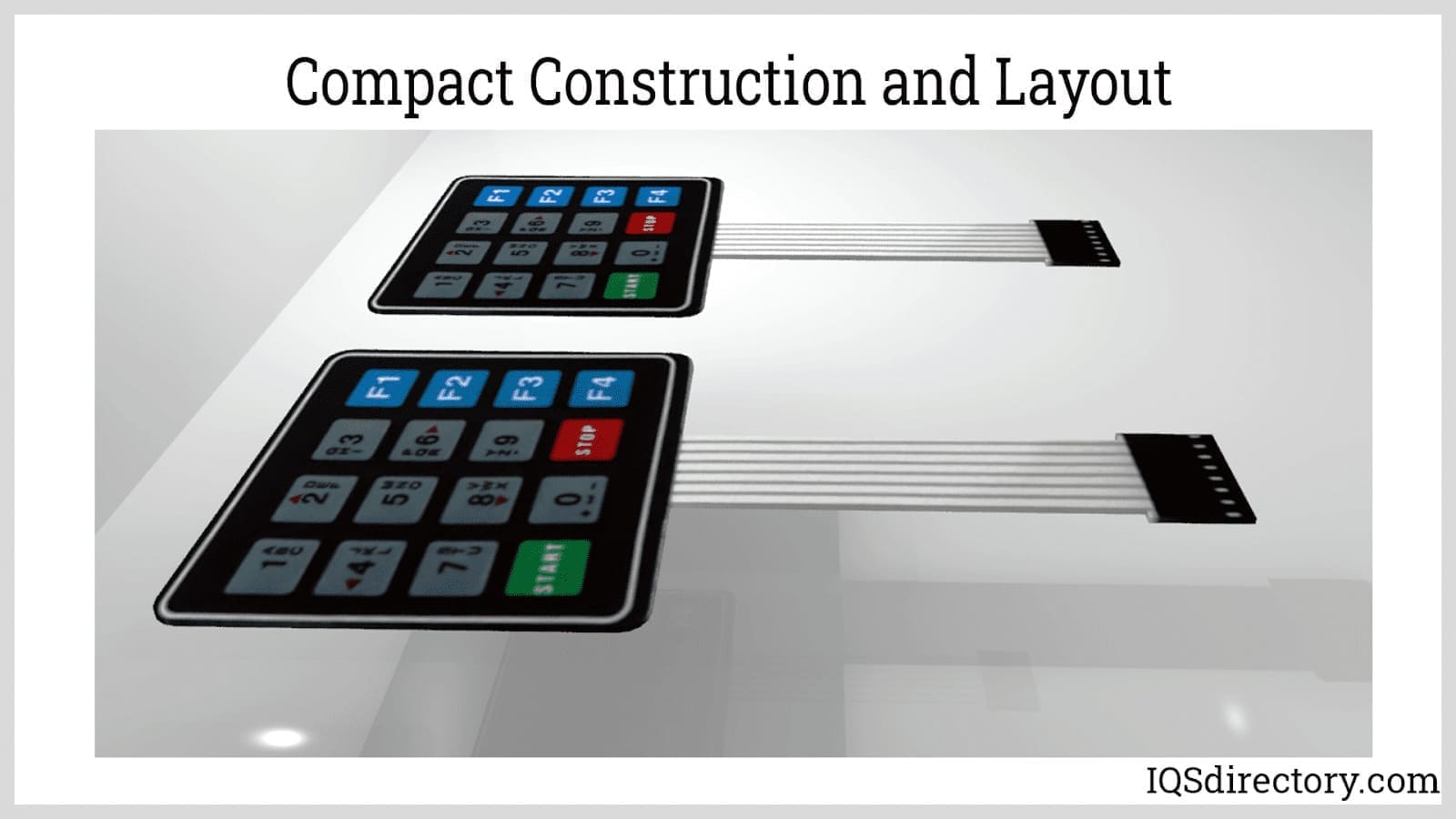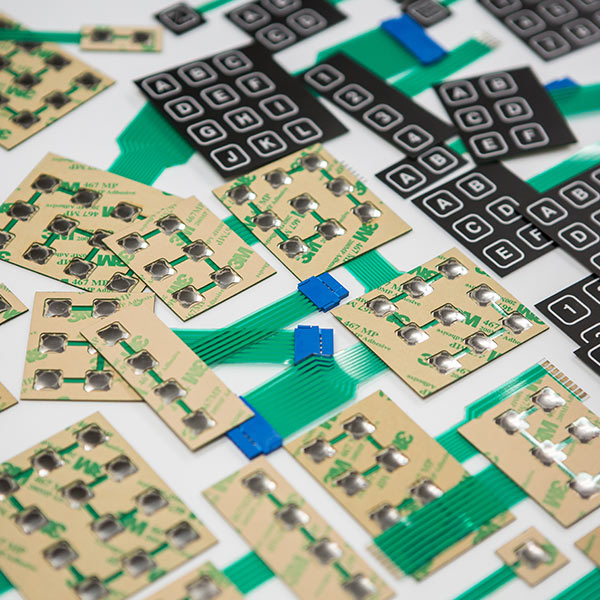Why Membrane Switches Are a Key Component in Modern Electronic Instruments
Membrane Switches Explained: A Comprehensive Guide to Their Benefits
Membrane layer switches stand for a advanced and functional option for creating customer interfaces throughout a selection of sectors. As sectors progressively seek reliable and reliable control user interfaces, comprehending the particular benefits and applications of membrane layer switches comes to be crucial.
What Are Membrane Switches?

When pressure is related to the membrane button, the layers make contact, completing an electric circuit. This simple device enables a vast array of applications, from customer electronics to industrial machinery. Membrane layer buttons are commonly made to be water resistant and resistant to dirt and contaminants, making them suitable for atmospheres where longevity is important.
Furthermore, the versatility of the products made use of in membrane layer switches helps with ingenious styles that can adapt to numerous forms and measurements. This flexibility adds to their appeal in varied areas, consisting of clinical devices, automotive controls, and home devices. Overall, membrane layer switches represent a critical component in modern-day customer interface innovation, connecting the space between users and electronic systems.
Key Benefits of Membrane Buttons
Amongst the myriad of interface choices offered, membrane changes attract attention for their one-of-a-kind mix of advantages. One of the primary benefits is their lightweight and compact layout, which enables for integration into a variety of tools without including considerable bulk. This is specifically advantageous in applications where space is limited.
Furthermore, membrane switches over offer resilience and resistance to environmental factors. They are generally constructed with products that can withstand moisture, dirt, and different chemicals, making them appropriate for harsh problems. This toughness adds to a longer lifespan compared to standard mechanical switches.
One more considerable advantage is the flexibility in modification. Membrane layer switches can be printed with various graphics, colors, and appearances, permitting customized styles that satisfy details branding or practical demands. This flexibility reaches the number of layers and circuit options, offering engineers with numerous setups.
Additionally, the responsive comments supplied by some membrane layer switches improves individual experience, making them extra user-friendly to run. The simplicity of cleaning and maintenance even more solidifies membrane layer buttons as a practical selection in both consumer and commercial applications. Generally, these key advantages make them a favored solution for several developers and suppliers
Applications in Different Industries
How do membrane buttons locate their place throughout varied sectors? Their flexibility and performance make them indispensable components in fields ranging from healthcare to customer electronics. In medical gadgets, membrane buttons are made use of for their convenience of cleaning and resistance to contamination, guaranteeing hygiene in atmospheres where sterility is vital.
In the customer electronics market, these buttons supply smooth, straightforward interfaces that boost product looks while keeping durability versus wear and tear. Automotive applications profit from membrane switches too, where they are made use of in dashboards and control panels, supplying trustworthy efficiency in challenging problems.
Additionally, commercial equipment utilizes membrane layer buttons for control board due to their toughness, capacity to endure extreme environments, and adjustable designs that provide to certain operational needs. The food market leverages membrane switches for their ease of usage and resistance to spills, making sure functional efficiency in busy settings.
Inevitably, the flexibility of membrane changes throughout these varied applications highlights their essential role in modern technology, boosting user interaction while fulfilling industry-specific demands. Their continued advancement assures additional assimilation into emerging fields and ingenious products.
Layout and Customization Choices
The design and modification alternatives readily available for membrane switches are critical for tailoring interfaces to satisfy particular user requirements and aesthetic choices. These buttons can be created in different shapes, dimensions, and formats, permitting seamless integration into varied applications. The versatility in layout means that suppliers can produce distinct interfaces that improve use and keep brand name identity.
Personalized graphics, colors, and textures like it can be applied to the surface of the membrane layer button, offering a possibility for branding and individual engagement. Furthermore, backlighting options, such as LED lighting, can be incorporated to improve visibility in low-light conditions, thus Check Out Your URL enhancing capability.
Functional components can additionally be personalized, consisting of responsive comments and actuation pressure, which can be adapted to suit different individual interactions. The selection of products, such as polyester or polycarbonate, permits variants in toughness and environmental resistance, satisfying the specific needs of different markets.
Eventually, the comprehensive design and customization capabilities of membrane buttons make it possible for business to create easy to use and visually enticing user interfaces, making certain that their items meet both functional and visual needs successfully. Membrane Switches.
Considerations for Execution
Implementing membrane switches over requires careful factor to consider of various variables to make certain optimal performance and individual experience. Variables such as direct exposure to moisture, extreme temperatures, and chemical compounds can dramatically influence the switch's performance and durability.

Another essential element is the switch's layout and format. Guaranteeing that the tactile feedback and actuation force align with customer expectations enhances usability. Conducting user screening can give valuable insights right into the optimum layout.
In addition, compatibility with digital parts have to be analyzed. The button's circuitry ought to line up with the general system design, guaranteeing reputable signal transmission and reducing interference.
Moreover, production methods and prices need to be examined. The choice in between personalized designs and standard versions can affect both budget plan and lead time.
Last but not least, think about repair and maintenance. Membrane layer switches might call for particular cleaning and treatment procedures to keep their appearance and functionality with time. By resolving these considerations, organizations can carry out membrane switches that fulfill their operational needs while giving a positive customer experience.

Conclusion
In conclusion, membrane layer changes represent a resilient and functional control interface ideal for a variety of applications across numerous markets. Their compact style, resistance to ecological factors, and personalized functions boost user experience while conference specific branding best site requirements. As innovation remains to progress, the importance of membrane buttons in modern gadgets remains considerable, supplying both performance and visual appeal. Future improvements will likely even more increase their applications and effectiveness in different settings.
Membrane layer switches represent a innovative and functional solution for creating user interfaces throughout a range of fields.Understanding the fundamental components of modern electronic interfaces, membrane layer switches are a type of individual interface gadget that consist of adaptable, thin layers of product. Overall, membrane layer switches over stand for a vital component in contemporary customer interface technology, linking the space between individuals and electronic systems.
Among the myriad of user interface options available, membrane changes stand out for their distinct combination of benefits.The layout and modification alternatives readily available for membrane layer buttons are critical for customizing interfaces to meet specific user needs and visual choices.